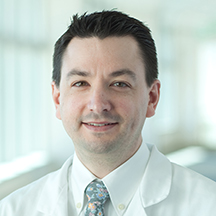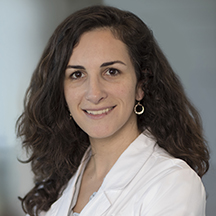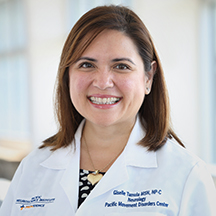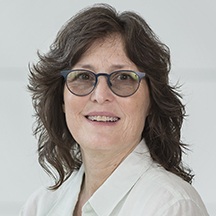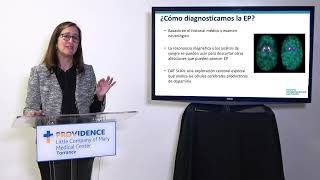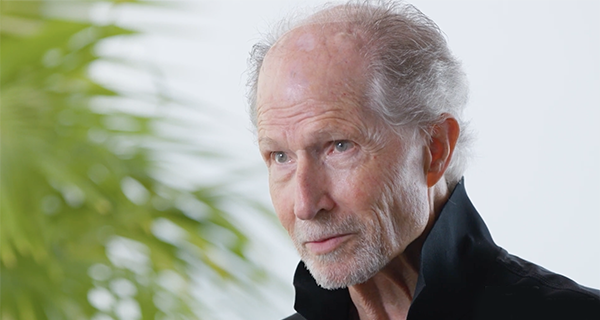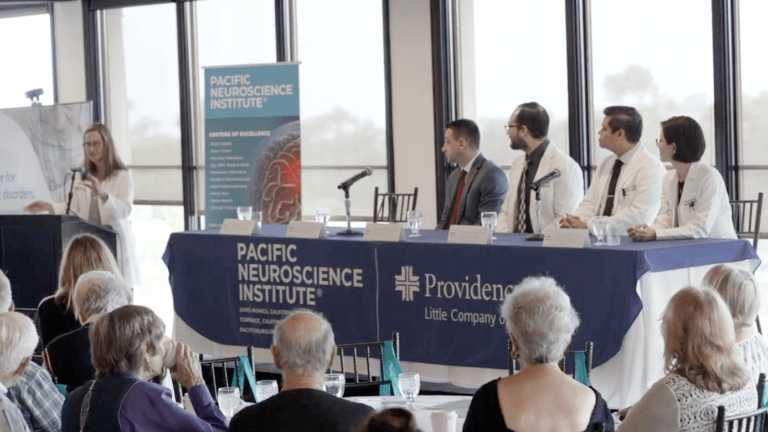
What Is Deep Brain Stimulation? (Part 1/3)
by PNI Experts
In this three-part series, PNI experts at the Pacific Movement Disorders Center in Santa Monica and Torrance discuss deep brain stimulation (DBS) for Parkinson’s disease, essential tremor, and dystonia. Discover the most commonly asked questions about DBS and what to expect with DBS surgery.

- What is deep brain stimulation?
- DBS information for Parkinson’s disease
- DBS information for essential tremor
- DBS information for dystonia
Millions of Americans suffer from Parkinson’s disease, essential tremor, and dystonia. These disorders are characterized by tremor, muscle rigidity, and/or slowness of movement that make even simple daily activities — like buttoning a coat, signing a check, and holding a cup of coffee — a major challenge. The good news is there is hope.
When medical therapies fail to produce consistent benefits, deep brain stimulation (DBS) has proven to be very effective in letting people gain control of their symptoms and improve their quality of life. Over 100,000 patients across the globe have already been helped by DBS.
The Food and Drug Administration (FDA) approved DBS as a treatment for essential tremor in 1997. In 2002 it was approved for Parkinson’s disease. And in 2003 it was approved for dystonia under a special use exemption. DBS has also been approved for use in Canada, Europe, and Australia since 1998. The therapy is completely FDA-approved and non-experimental.
What is deep brain stimulation (DBS)?
Deep brain stimulation (DBS) can be thought of as a “brain pacemaker.” It is a medical device as well as a clinical therapy.
DBS is composed of two parts. An electrode (“lead”) is surgically implanted into deep brain structures involved in movement-related control. The electrode is connected to a pulse generator — similar to a cardiac pacemaker — under the skin and below the collarbone.
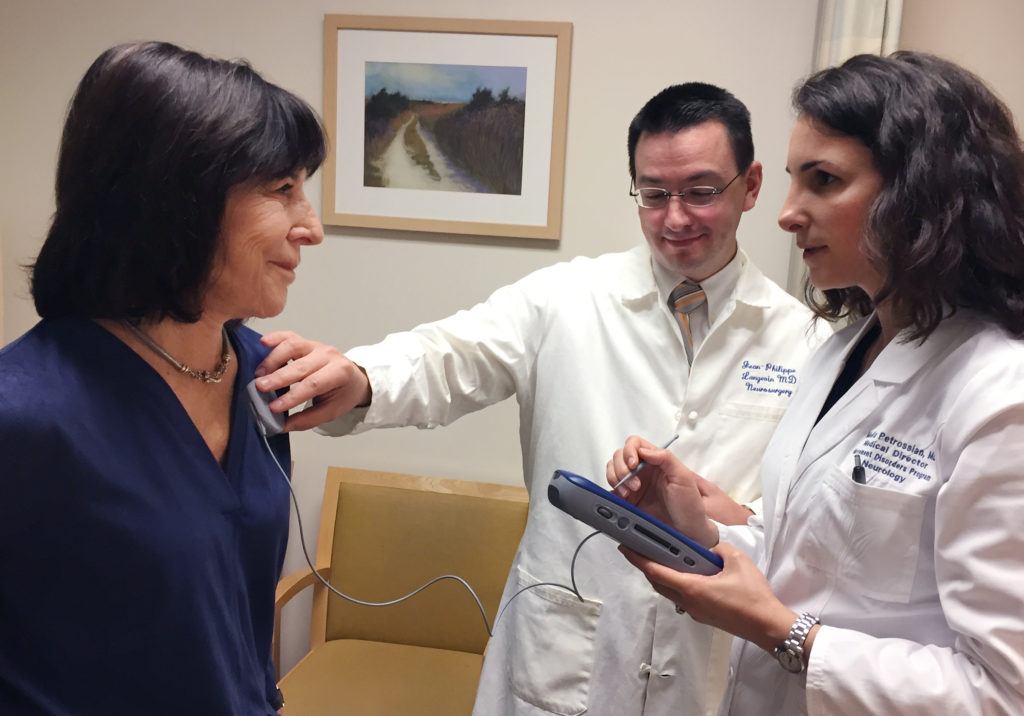
Dr. Melita Petrossian and Dr. Jean-Philippe Langevin
at the Movement Disorders Center.
The pulse generator delivers electrical pulses to the brain tissue through the electrode, blocking the brain signals that cause abnormal movement.
In many patients, leads are implanted on both sides of the brain. The stimulator is adjusted by the medical team, and patients can use a simple hand-held remote to turn it on or off, and sometimes to control their stimulation. There are no external wires to the devices; the entire system is fully implanted under the skin.
DBS Information for Patients With Parkinson’s Disease
Deep brain stimulation (DBS) helps control many symptoms of Parkinson’s disease, including shaking, slowed movement, and stiffness. Most commonly, patients become candidates for DBS once medication alone does not effectively control their symptoms.
People with DBS therapy may see improvement in their quality of life and when performing activities like eating, bathing, dressing, toileting, and movement. Depending on the target chosen, patients may be able to somewhat reduce the amount of medication they take.
DBS can provide several additional hours of movement control per day when compared to medication alone. With the exception of tremor, it is important to note that symptoms that do not respond to medications such as levodopa do not generally respond to DBS.

When should I have DBS surgery if I have Parkinson’s disease?
People with PD should start DBS at the point when their daily function becomes challenging due to inconsistent medication effect, that is, when medications alone are providing less movement control, and/or causing unwanted movements (dyskinesia). However, DBS is not a last resort and patients should not wait too long because DBS does not help with some of the symptoms of advanced PD, such as frequent falls or dementia.
The best time to maximize the benefit from DBS is when medications alone aren’t providing enough relief, but still have some effect. Examples of this include:
- Tremor and stiffness are occurring for more hours each day.
- Medication doses take longer to work, and/or the effect is less predictable.
- The medication’s effects wear off between doses and you have to take them more often, including during the night.
- You need higher doses of medications to get the same effect.
- Side effects from your medications are worsening.
DBS Information for Patients With Essential Tremor

Deep brain stimulation (DBS) helps control the symptoms of essential tremor. You may be a candidate for DBS surgery if you have tremor in at least one arm or hand and it keeps you from doing what you want to do. This can include daily tasks like writing or eating. For many people, their tremor causes embarrassment or anxiety when around other people, causing them to reduce their social activity. DBS can be considered when medications have been tried and they didn’t work, or their side effects could not be tolerated.
DBS tends to be the most effective for upper extremity (arm or hand) tremors, but can also improve tremor in the head, voice, and legs in certain situations.
When should I have DBS surgery if I have essential tremor?
Essential tremor tends to get worse over time. Many people expect that DBS is a last resort. However, the best time to maximize the benefit of DBS is when your tremor becomes disabling despite trying the best medical therapy directed by a neurologist.
DBS Information for Patients With Dystonia
Deep brain stimulation helps control the symptoms of dystonia, a neurological movement disorder characterized by involuntary muscle contractions. These contractions force certain parts of the body into repetitive, twisting movements or painful postures. Dystonia can cause severe involuntary muscle contractions that often interfere with everyday functions like walking, sleeping, eating, and talking. There are various forms of dystonia that are identified by your neurologist.
When should I have DBS surgery if I have dystonia?
The best time to maximize the benefit of DBS is when your dystonia becomes disabling despite the best medical therapy directed by a neurologist.
Note that DBS for dystonia is classified as a Humanitarian Device. It is authorized by Federal Law as an aid in the management of chronic, intractable (drug refractory) primary dystonia, including generalized and/or segmental dystonia, hemidystonia, and cervical dystonia (torticollis), in patients seven years of age or above. The effectiveness of the devices for treating these conditions has not been demonstrated
Useful Links
- What Can I Expect With Deep Brain Stimulation (DBS) Surgery? (Part 2/3)
- 25 Questions About Deep Brain Stimulation (Part 3/3)
- Parkinson’s Disease
- Dystonia
- Essential Tremor
About Pacific Movement Disorders Center
Pacific Movement Disorders Center offers surgical and non-surgical options for movement disorders. Properly managing movement disorders must include both education and support. With informational programs, support groups, psychological care, and caregiver guidance, we’re with you at every step. Our partnership with American Parkinson’s Disease Association (APDA) also provides structured support groups for newly diagnosed PD patients and their families.
Pacific Movement Disorders Locations
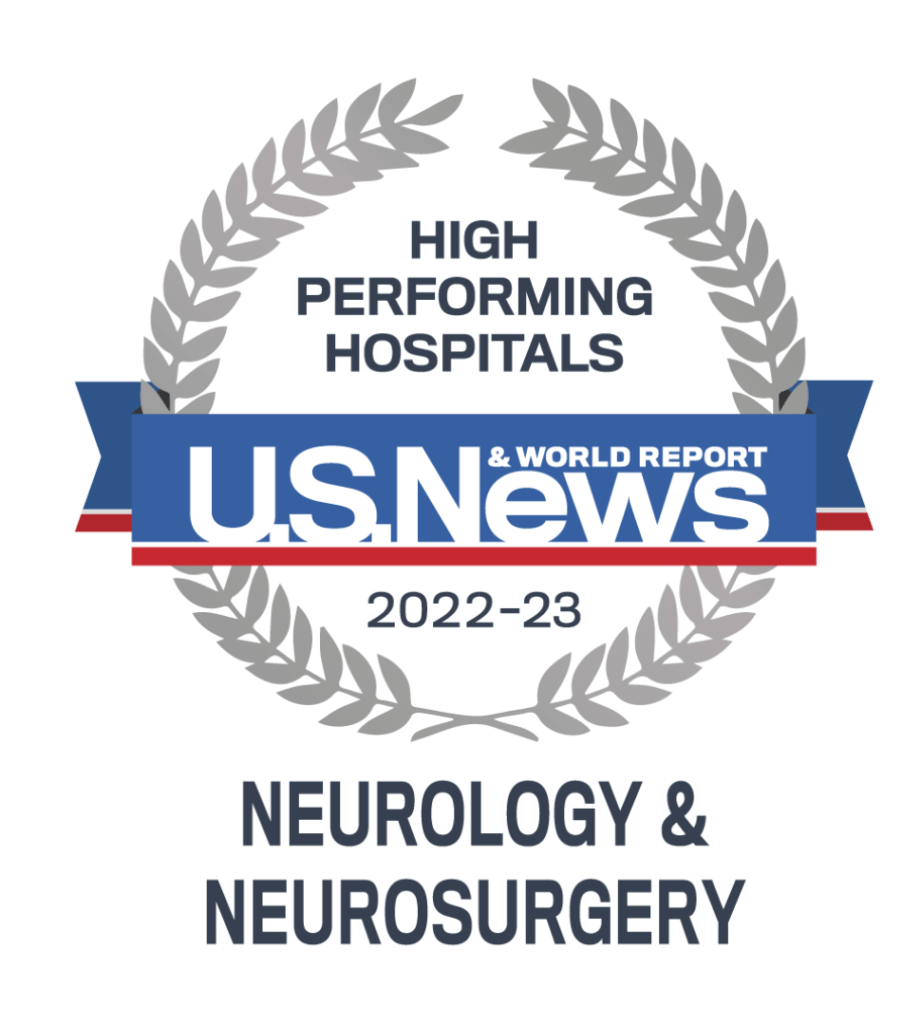
The Pacific Movement Disorders Center’s state-of-the-art facilities are located at:
Providence Saint John’s Health Center
2125 Arizona Ave, Santa Monica, CA 90404
310-829-8265
Providence Little Company of Mary Medical Center Torrance
5215 Torrance Blvd, Suite 300, Torrance, CA 90503
424-212-5361
Meet the Team
About the Author
PNI Experts
Last updated: March 3rd, 2023
